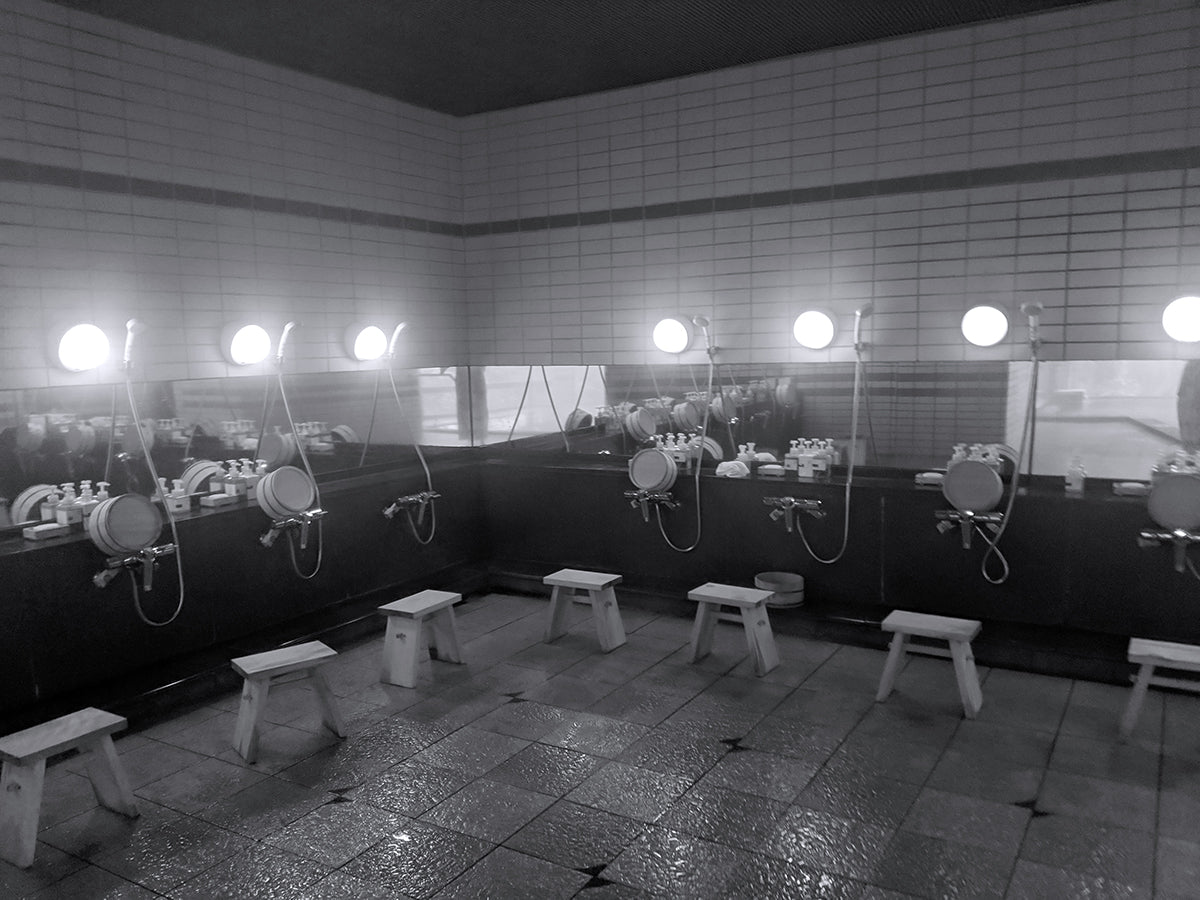Walk into any bathhouse in Japan, and you are sure to find the same basic things, whether you are bathing at a Tokyo sento or a remote rural onsen.
Men’s and women’s baths are almost always separated. Each side is separated by a door or a noren curtain. When you first walk in, there are lockers or baskets so that you may stow your personal belongings. Since bathing is always done in the nude, you will also need to store your clothing or yukata (a cotton kimono often worn around Japan’s hot spring towns). This storage area is usually separate from the washing area.

Next is the washing area. In Japan, washing is always done before soaking and is considered the first step in washing away the grime and cares of the day. Here you won’t find Western-style showers. What you’ll find are individual washing stations with water faucets that are close to the floor. In front of each washing station are two things: a washing bench and a bucket. In the most ideal cases, these will be made from hinoki cypress wood. Aside from smelling beautiful, hinoki is naturally antiviral and resists mold and mildew, making it perfect for a bathhouse’s balmy environment.
Most bathhouses provide three toiletries: body wash, shampoo, and conditioner. I remember my first experience bathing at a sento in Tokyo. I tried to wash off with conditioner – thankfully, a woman came over and showed me which bottle was the body wash, as all the labels were all in Japanese. I prefer to bring a little bag of my own products, which is completely permitted – just keep everything tidy.
Sitting on a hinoki bench while washing up is really a relaxing ritual in and of itself. You can spray water over your body from the mobile showerhead or pour it over your body using the hinoki buckets. People take their time washing up. It is a time to take it slow and not rush. Wash away all your cares and wind down your mind before you get in the bath.

After you’ve gotten in the bath, linger there as long as you’d like. When you begin to get hot, simply get out of the bath and fill your hinoki bucket with lukewarm water. Pour it over your shoulders and back (this feels amazing), and you’ll be ready to get back into the bath. You can also use the bucket for a final rinse if desired.
I always find that Westerners can be intimidated by soaking in Japan’s bathhouses and onsen. After a few times, though, it becomes part of your nature. Above, I mentioned a woman who showed me the body wash. While I was soaking that day, she came over to me and showed me the outdoor bath, which I could have all to myself. I wouldn’t have known it was there without her. We didn’t speak the same language, but with kindness, sometimes no words are needed.
Bathhouses are really a way to experience another culture. I can’t imagine a more authentic way to experience real Japan.
Warm wishes,
Françoise


1 comment
It has been many years since I lived in Japan, but my memories of the people, bathhouses, and inns are still vivid and beautiful!